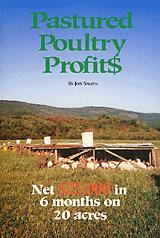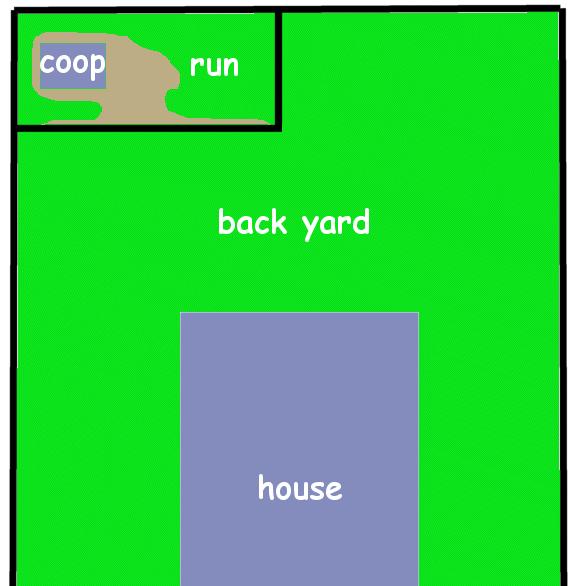Our family really like eggs and chicken meat both. So, when someone had a sign tacked up at the local feed store for 5 one year old laying hens for $20, it seemed like a good gamble. We have a small fenced-in yard and that solved having wayward chickens in a neighbor’s strawberry patch—now we just needed a place to put them up at night.
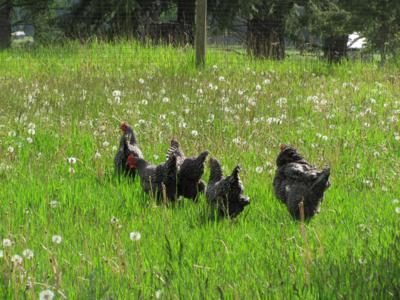
One of the big things that I want to get across here is that when you own an animal, you take on the responsibility for that animal’s care, feeding, protection and overall welfare. We cannot overstate the fact that if you are not interested in doing this, then please stick with buying meat, eggs, milk or anything else that comes from livestock.
Top of the list for learning to care for and finding out how to build an abode that compliments the chickenness of the chicken is the book Pasture Poultry Profit$ by Mr. Joel Salatin. The New York Times calls him, “The High Priest of the Pasture.” I guess that is a cool moniker and all, but what impresses me the most is that the man certainly knows his chickens.
I also really like the Chicken 2.0 article by Paul Wheaton on chickens where he compares and contrasts (with measurable indicators) why raising chickens in a paddock shift system is better than in a coop and run.
I think that either of those two resources will work very well for someone looking to get started with chickens, is thinking that one day they might want chickens, or had a dream about chickens. I read more than I do, I find that it is much cheaper that way. Why go through the trial and error of doing something wrong when other people may have documented their mistakes already?
I wanted the design to incorporate basic features:
-Reasonably strong
-Well ventilated
-Can be secured (at night)
-Light-weight and portable
-Kept the chickens dry during rain
-Had enough roosts for the chickens
-Had nesting boxes
-Open at the bottom to avoid having manure collect
-Open at the bottom so that the chickens can forage (when they are not in the yard)
-Built using materials on hand (inexpensive)
Building the coop: Using the above requirements, here is what I did to build the coop/tractor:
-I scavenged two old pallets from Chaya’s sidewalk version 1 that were about 3’ wide
-I took the bottom “skids” off of them so that they were flat on one side and had the exposed ribs on the other side.
-I then stood them up on end (about 6’ apart), and connected them with a piece of plywood along the backside
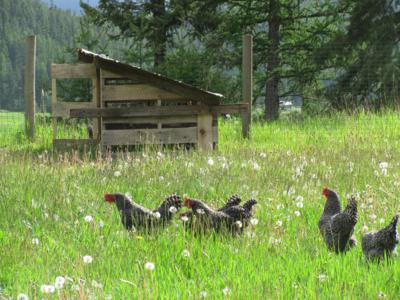
-I then measured the width of the roof with the piece of tin I had on hand
-I took that measurement and figured out (accounting for a small over hang on the front and back) how much I could cut off the pallets (on an angle) to form the roof line
-I covered both ends of the coop with chicken wire to offer the chickens some protection
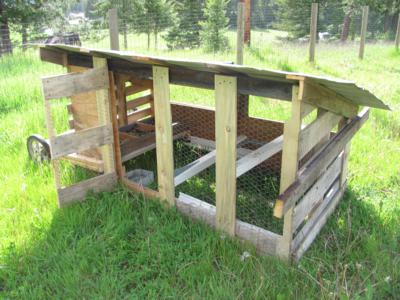
-I then connected the two high points on each side to form the front of the roof
-I did the same with the low sides and laid a few rafters across and then attached the tin roof
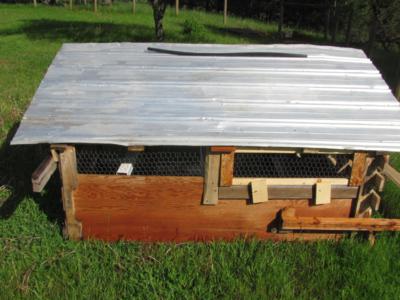
-I covered the back exposed portion with chicken wire and built a removable window to allow access to the laying boxes from the back (rotate those two blocks of wood and the window pops out)
-I attached some “skids” to the bottom and then framed in the front building a simple door and covered any open space with chicken wire
-I trimmed out the edges to cover exposed cut chicken wire
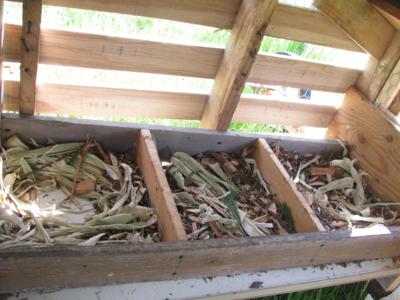
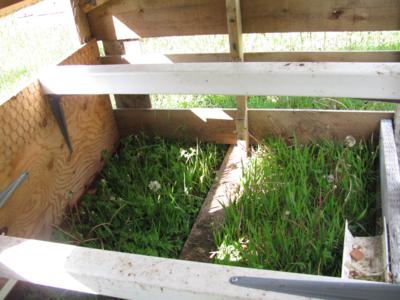
-I put two simple roosts on the right side and constructed a shelf on the left that held three laying boxes ~12” X 12.”
-I used a short section of rain gutter for a feed trough (as needed)
-To make it mobile, I attached two horizontal struts with old lawnmower wheels on them and a cross bar on the front. Chaya and Scooter can move this on a daily basis. Keep in mind, it does not have to move very far (only about 6-8’).
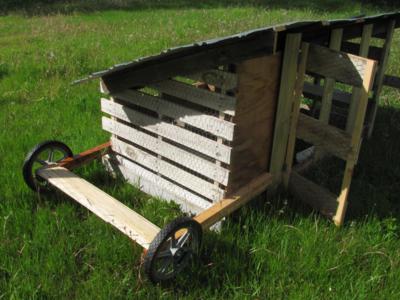
The chickens like it. They put themselves to bed every night and wake up ready to eat bugs every morning. I must say that we do not miss ticks in the yard, and we do like fresh eggs so it is a win-win.
Further improvements/consideration:
-If some building grade lumber could be salvaged from a demolition, I think that the framing would go much faster and the overall chicken coop/tractor would be lighter.
-I am sure that the spiral nail industry is kept alive by the pallet industry. If you had in mind that you could pull those nails out—you are kidding yourself. Better to pound them straight in!
-The biggest expense that we had were the fasteners—pretty much everything else was salvaged. If you are one to stock up on things before they become more expensive, you may want to check into fasteners. They do not go spoil or go rotten, but be sure to protect from them from rust.
-This coop/tractor is obviously not going to get me on the cover of Chicken Keeper Quarterly, but it was inexpensive. Sure, you can drop big coin on a coop, build your own, etc. The first two parts of Reduce, Reuse, Recycle often get overlooked. If you keep your farming intrastructure light weight and portable, you generally can keep your costs way down.
Leave a comment about your chicken coop building experiences.
Wilson
Pro Deo et Patria
Photo Credits:
Cover of Pastured Poultry Profit$ by Polyface Farms
Chicken Coop and Run by Paul Wheaton at Richsoil.com
All other Chicken Coop photos by Pantry Paratus

